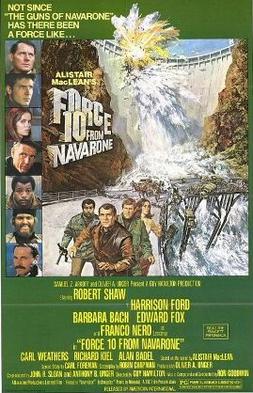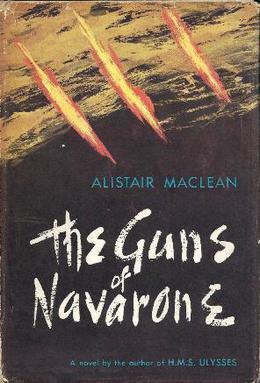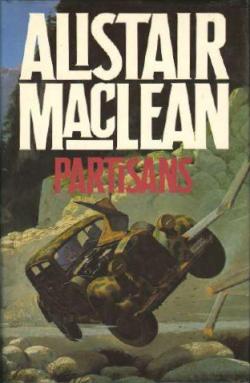Force 10 from Navarone may refer to:
Abduction may refer to:
The War of the Worlds is an 1898 science fiction novel by H. G. Wells.
The Guns of Navarone or Navarone may refer to:
Alistair Stuart MacLean was a Scottish novelist who wrote popular thrillers and adventure stories. Many of his novels have been adapted to film, most notably The Guns of Navarone (1957) and Ice Station Zebra (1963). In the late 1960s, encouraged by film producer Elliott Kastner, MacLean began to write original screenplays, concurrently with an accompanying novel. The most successful was the first of these, the 1968 film Where Eagles Dare, which was also a bestselling novel. MacLean also published two novels under the pseudonym Ian Stuart. His books are estimated to have sold over 150 million copies, making him one of the best-selling fiction authors of all time.
XX or xx may refer to:

Force 10 from Navarone is a 1978 British war film loosely based on Alistair MacLean's 1968 novel of the same name. It is a sequel to the 1961 film The Guns of Navarone. The parts of Mallory and Miller are played by Robert Shaw, and Edward Fox, succeeding in the roles originally portrayed by Gregory Peck and David Niven. It was directed by Guy Hamilton and also stars Harrison Ford, Carl Weathers, Barbara Bach, Franco Nero, and Richard Kiel.
Defender(s) or The Defender(s) may refer to:
John Lee Thompson was an English film director, screenwriter and producer. Initially an exponent of kitchen sink realism, he became known as a versatile and prolific director of thrillers, action, and adventure films.
Special or specials may refer to:
Dry or dryness most often refers to:
Force 10 may refer to:

Carl Foreman, CBE was an American screenwriter and film producer who wrote the award-winning films The Bridge on the River Kwai and High Noon, among others. He was one of the screenwriters who were blacklisted in Hollywood in the 1950s because of their suspected communist sympathy or membership in the Communist Party.

The Guns of Navarone is a 1961 action adventure war film directed by J. Lee Thompson from a screenplay by Carl Foreman, based on Alistair MacLean's 1957 novel of the same name. Foreman also produced the film. The film stars Gregory Peck, David Niven and Anthony Quinn, along with Stanley Baker, Anthony Quayle, Irene Papas, Gia Scala, Richard Harris and James Darren. The book and the film share a plot: the efforts of an Allied commando unit to destroy a seemingly impregnable German fortress that threatens Allied naval ships in the Aegean Sea.

Force 10 from Navarone is a World War II novel by Scottish author Alistair MacLean. It serves as a sequel to MacLean's 1957 The Guns of Navarone, but follows the events of the 1961 film adaptation of the same name. It features various characters from the film who were not in the book, and leaves out some major characters from the book.

The Guns of Navarone is a 1957 novel about the Second World War by Scottish writer Alistair MacLean that was made into the film The Guns of Navarone in 1961. The story concerns the efforts of an Allied commando team to destroy a seemingly impregnable German fortress that threatens Allied naval ships in the Aegean Sea and prevents over 1,200 isolated British Army soldiers from being rescued.

Partisans is a novel by the Scottish author Alistair MacLean, first published in 1982. MacLean used portions of the plot from the 1978 film Force 10 from Navarone as the basis of the plot for this novel. MacLean reverted to the theme of the Second World War, with which he was successful and highly popular in his early career. However, as with many of his later novels, Partisans proved to be less than popular with his long-time fans.
Mike may refer to:
The Game most commonly refers to:
Sam Llewellyn is a British author of literature for children and adults.
Navarone Island is a fictional island portrayed in a novel by Alistair MacLean entitled The Guns of Navarone. The novel was made into a movie, but the film changed some of the geography of the island. Although Navarone does not exist, its history is based on the real history of the Aegean Islands of Greece.